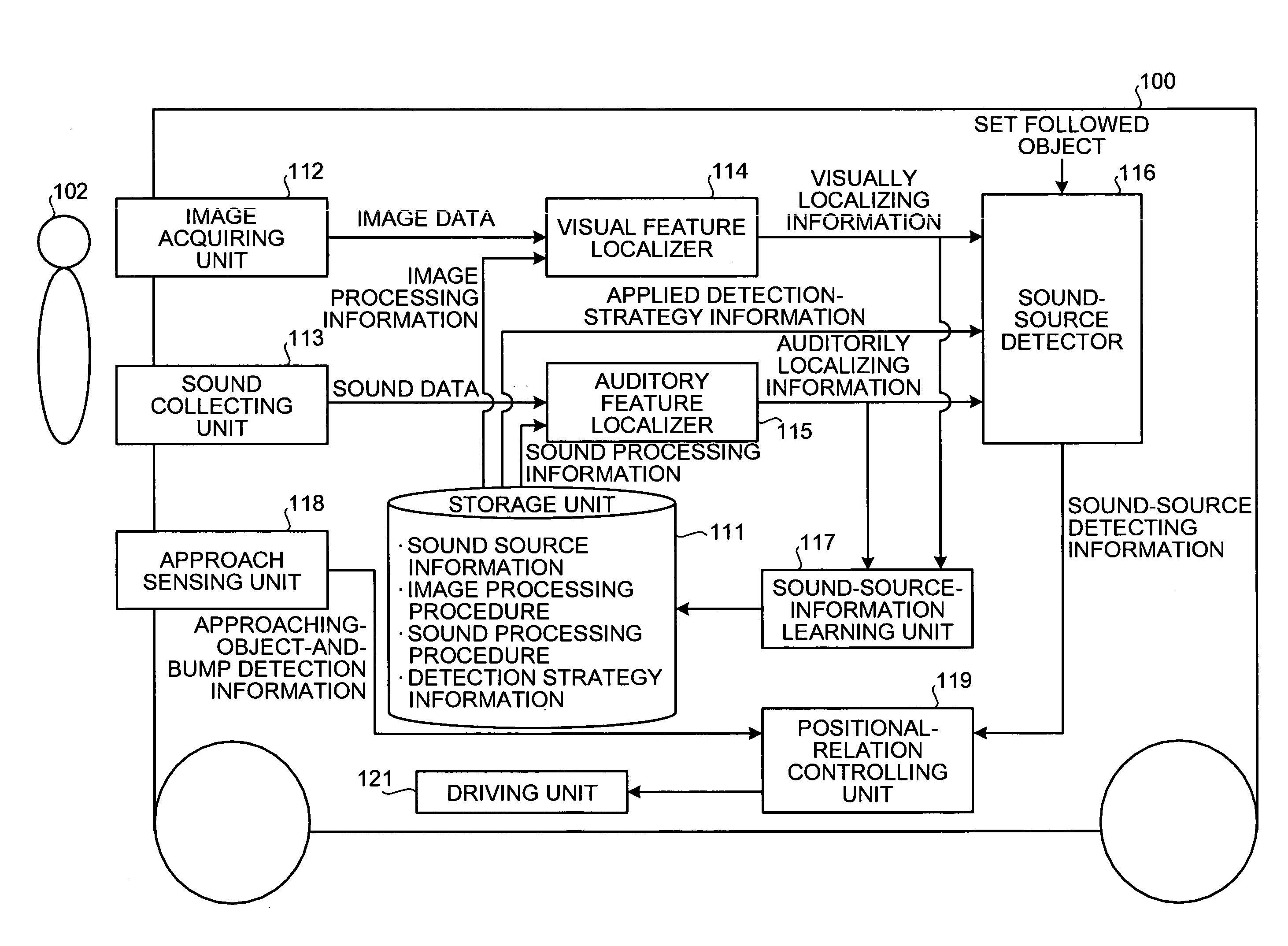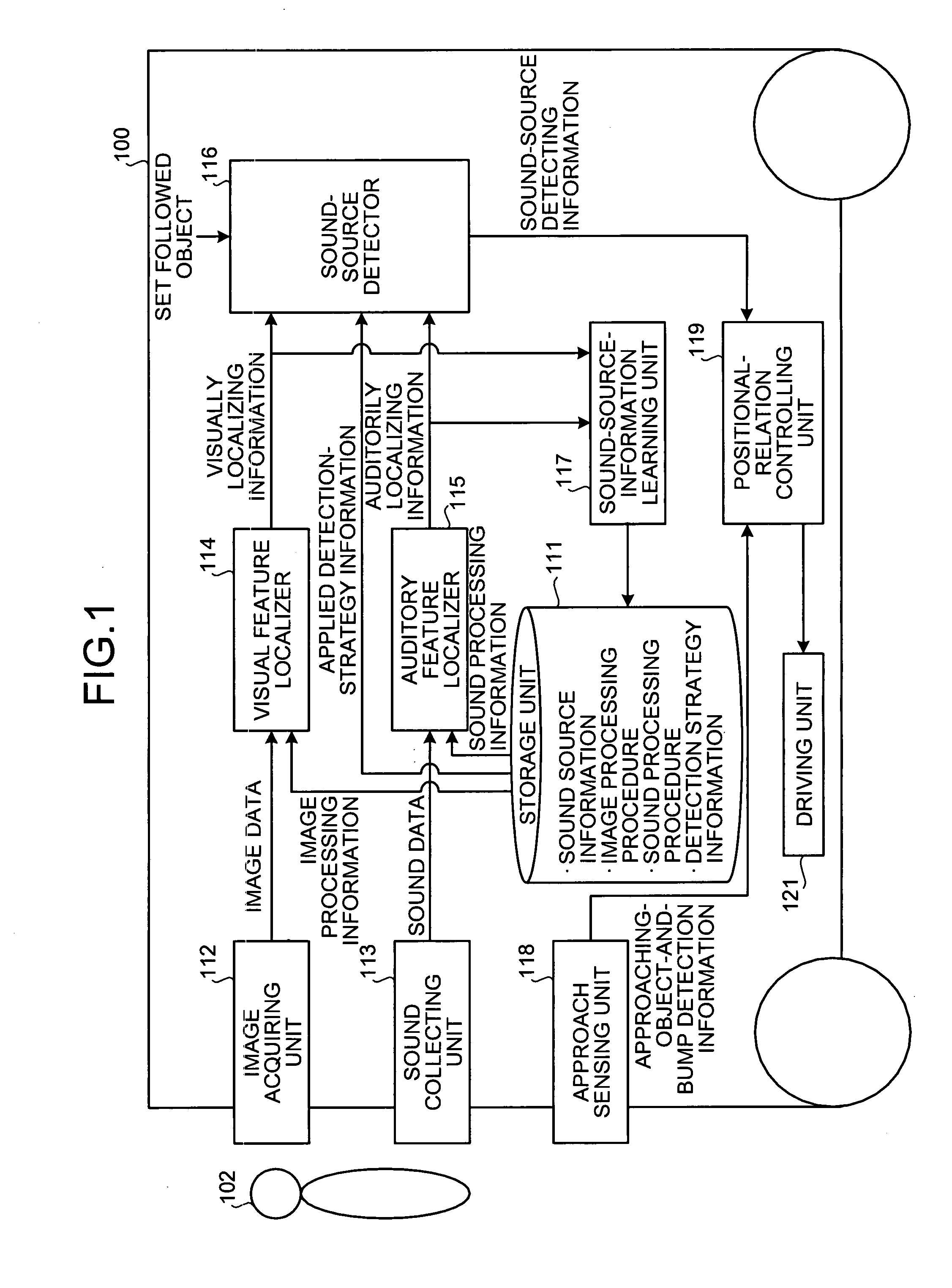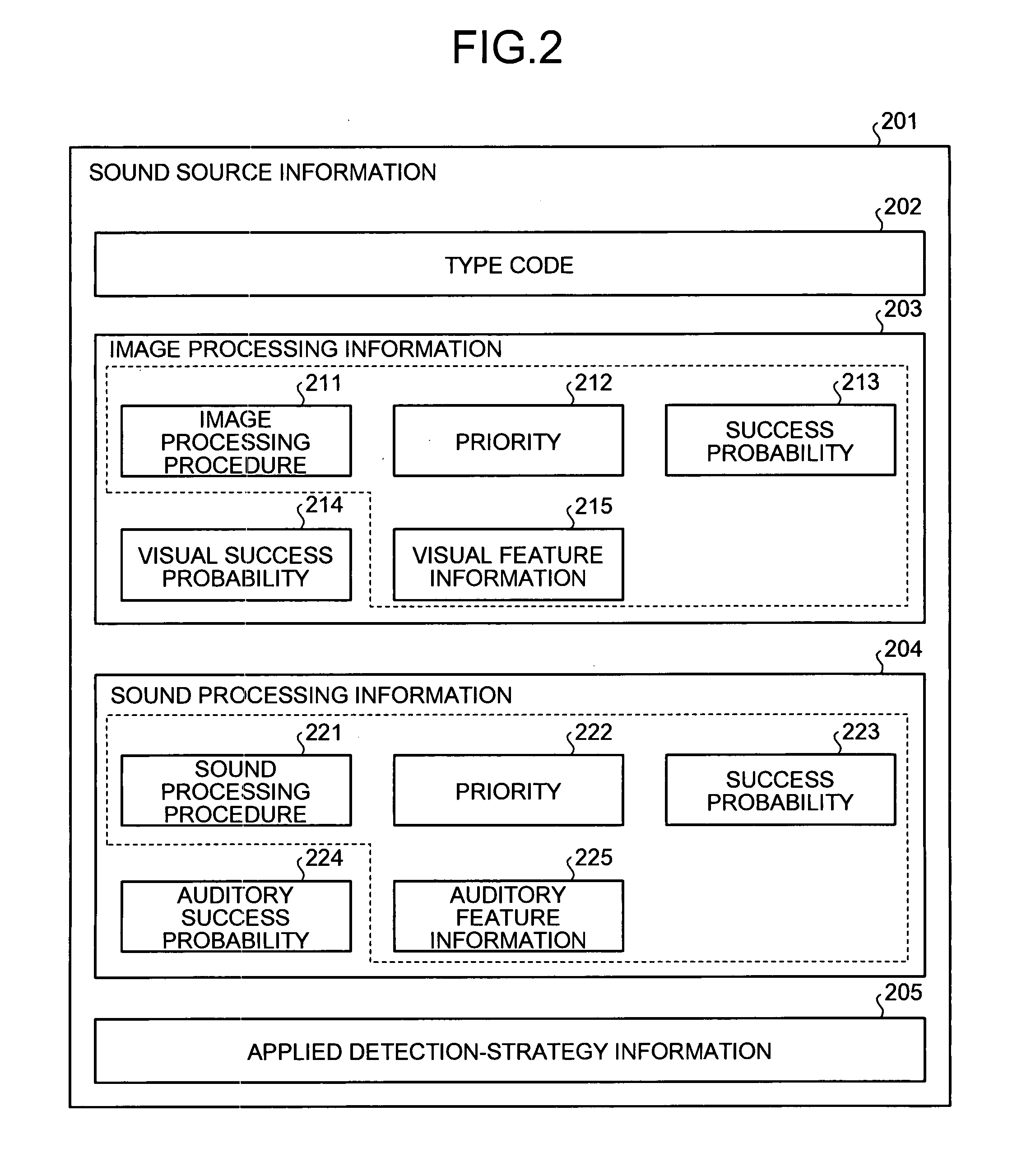Position detecting device, autonomous mobile device, method, and computer program product
- Summary
- Abstract
- Description
- Claims
- Application Information
AI Technical Summary
Problems solved by technology
Method used
Image
Examples
first embodiment
[0030]As shown in FIG. 1, a robot device 100 includes an image acquiring unit 112, a sound collecting unit 113, an approach sensing unit 118, a visual feature localizer 114, an auditory feature localizer 115, a sound-source detector 116, a sound-source-information learning unit 117, a positional-relation controlling unit 119, a driving unit 121, and a storage unit 111.
[0031]A person can be visually distinguished from other persons from his / her face and clothes. Moreover, persons make voice and sound, so that a person can be recognized from his / her voice and sound. Such an object that can be visually and auditorily distinguished will be referred to as a sound source below. Visually detecting the sound source is referred to as visual detection, and auditorily detecting the sound source is referred to as auditory detection below.
[0032]The image acquiring unit 112 acquires an image, i.e., image data, of the sound sources. The image acquiring unit 112 can be a stereo camera mounted on a...
second embodiment
[0125]However, relation between the easiness of visual detection by the visual feature information and the easiness of auditory detection by the auditory feature information can vary depending on the environment. For example, in a messy place where obstacles are scattered, it is difficult to visually detect the sound source because the sound source is often hidden behind the obstacles; however, it is less difficult to auditorily detect the sound source because the sound can be heard regardless of the obstacles. On the contrary, in a bare place with few obstacles, it is easy to visually detect the sound source. Furthermore, it is easier to detect footsteps on a hard floor like wood than on a carpet. Taking into account the easiness of the visual detection and the easiness of the auditory detection depending on the environment, a robot device according to the present invention controls and combines the detection of the sound source based on the image processing procedure 211 and the d...
PUM
 Login to View More
Login to View More Abstract
Description
Claims
Application Information
 Login to View More
Login to View More - R&D
- Intellectual Property
- Life Sciences
- Materials
- Tech Scout
- Unparalleled Data Quality
- Higher Quality Content
- 60% Fewer Hallucinations
Browse by: Latest US Patents, China's latest patents, Technical Efficacy Thesaurus, Application Domain, Technology Topic, Popular Technical Reports.
© 2025 PatSnap. All rights reserved.Legal|Privacy policy|Modern Slavery Act Transparency Statement|Sitemap|About US| Contact US: help@patsnap.com



